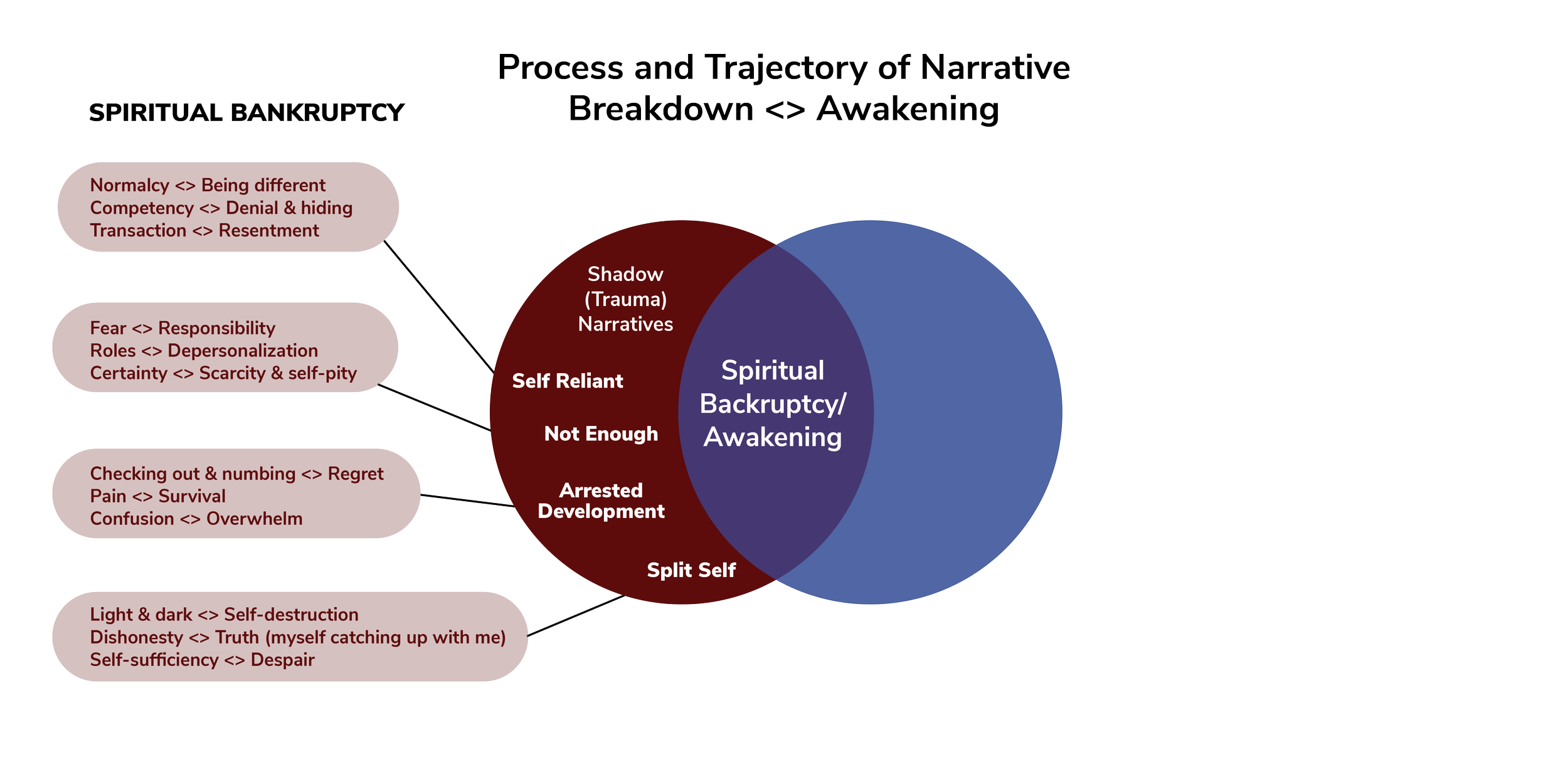Shadow (Trauma) Narratives
Shadow Narratives arrest individual and systemic growth. They lead to spiritual breakdown/bankruptcy.
Negative Dynamics of Paradox:
Lewis (2000) observed that paradox can be managed and engaged using both positive and negative dynamics. Shadow narratives cannot harness the depth and power of paradox because only the negative dynamics of splitting, projection, repression, regression, reaction, and ambivalence (Lewis, 2000) are at play, involving vicious cycles of tension inhibiting change, and ultimately creating such dissonance and fragmentation that spiritual breakdown/bankruptcy occurs. Think of the negative dynamics of paradox as bullies on the playground that you can never figure out how to appease or get along with. Think of spiritual breakdown as unfathomable loss, pain, anguish, or powerlessness to change.
“What needs to die is my framing, not the experience, the experience was real. But my framing, my interpretation of it, and how that still controls me, keeping me from leading with life” (P5).

